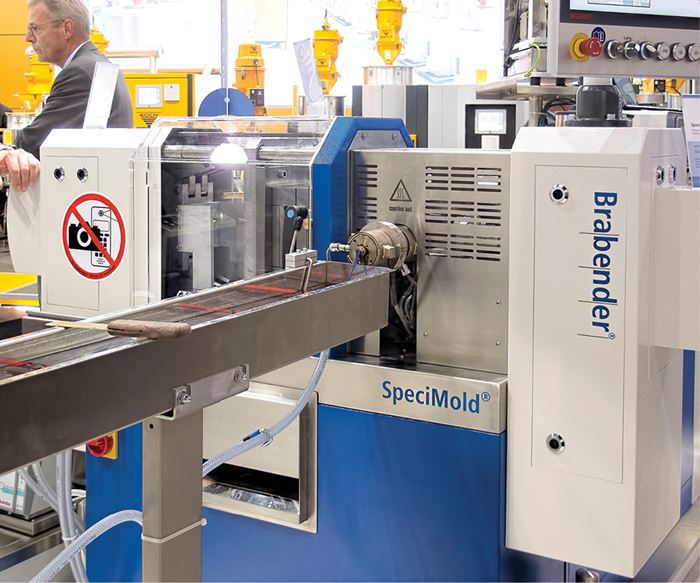Special Molding Setup for Materials Test Labs
Injection press integrated with twin-screw compounder to produce test samples.
Materials development and testing laboratories that need to injection mold large numbers of “dogbone”and other test specimens found an unusual solution at the recent K Show in Dusseldorf. Brabender GmbH of Germany demonstrated its new SpeciMold system, which integrates a 25-ton injection press with a 20- to 30-mm twin-screw compounding line and a strand die, water bath, and pelletizer. Developed jointly with the German Fraunhofer Institute for Environmental, Safety and Energy Technology, SpeciMold diverts a small amount of the melt stream before the die into a reservoir without interrupting the extrusion process. When a full shot has been accumulated, a plunger automatically injects the melt into a quick-change insert mold to produce standard test samples such as tensile or impact test bars, spiral-flow samples, or color chips. A demonstration system will be available at C.W. Brabender Instruments, Inc., S. Hackensack, N.J.
Related Content
-
Safety, Recycling, and Compounding Trends Bring New Opportunity to 70-Year-Old Company
NPE2024: Vac-U-Max presents pneumatic conveying solutions for powdered materials.
-
How to Configure Your Twin-Screw Extruder: Part 3
The melting mechanism in a twin-screw extruder is quite different from that of a single screw. Design of the melting section affects how the material is melted, as well as melt temperature and quality.
-
What to Know About Your Materials When Choosing a Feeder
Feeder performance is crucial to operating extrusion and compounding lines. And consistent, reliable feeding depends in large part on selecting a feeder compatible with the materials and additives you intend to process. Follow these tips to analyze your feeder requirements.













